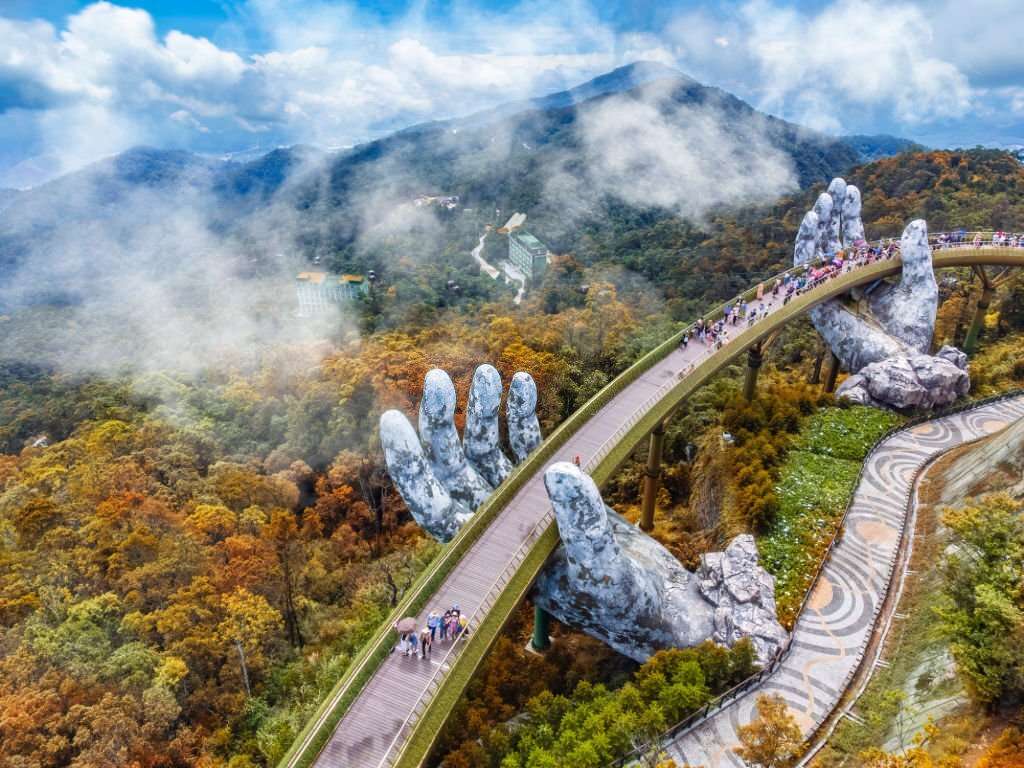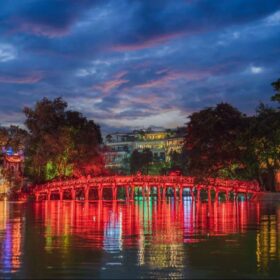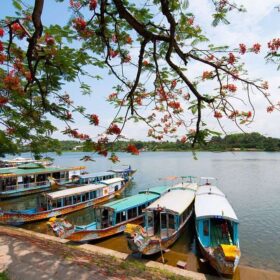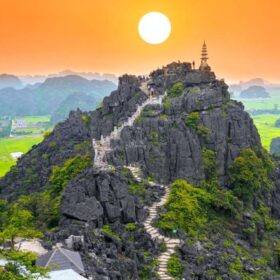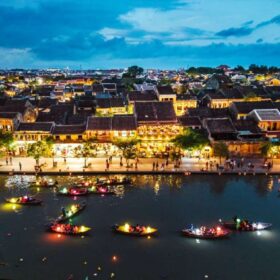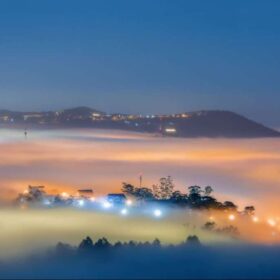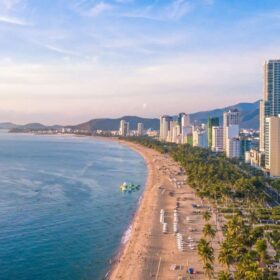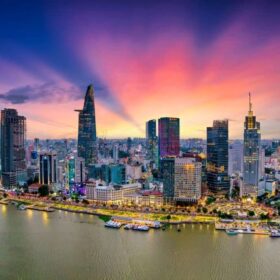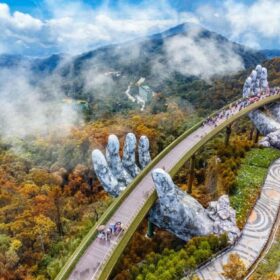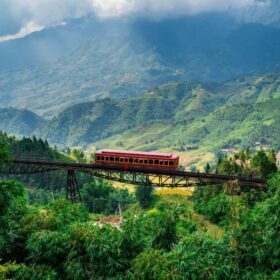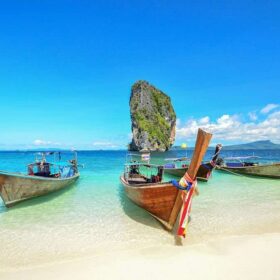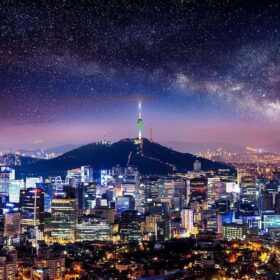Vietnam offers a captivating blend of natural wonders and cultural diversity. Its landscapes range from rugged peaks visible from meandering mountain routes to lush rice fields adorned in a spectrum of green shades. With a long history and a multicultural population encompassing over 54 ethnic minority groups, a journey through Vietnam is steeped in heritage.
Outdoor enthusiasts can immerse themselves in the countryside through numerous national parks, where hiking, biking, and kayaking are popular activities. However, Vietnam’s most renowned natural attraction, the breathtaking karst seascape of Halong Bay, can be experienced up close even by those seeking a more leisurely pace on a cruise.
While rural areas showcase lush panoramas, the bustling cities offer a taste of contemporary life and provide ample opportunities to savor Vietnam’s delectable culinary delights.
This enthralling country is brimming with surprises and stands as one of Southeast Asia’s most underrated destinations. Start planning your sightseeing adventures with our list of the top tourist attractions in Vietnam.
1. Ha Long Bay
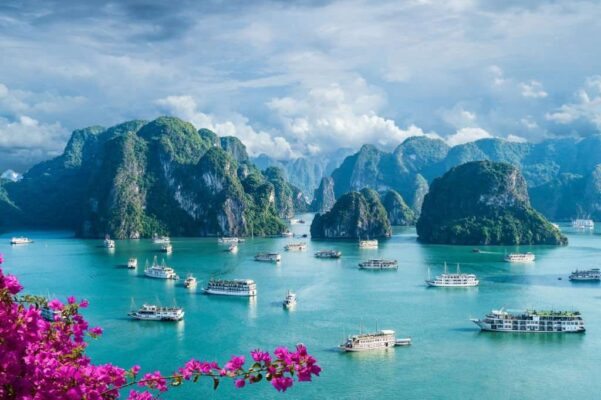
Halong Bay is a top tourist attraction for travelers seeking the beauty of a UNESCO World Heritage Site.
The Gulf of Tonkin is home to a mesmerizing bay filled with numerous limestone islands. These islands have been shaped into stunning jagged pinnacles through the natural forces of wind and water over countless years.
Explore the stunning bay’s scenery on a delightful boat ride, making it the perfect destination for cruising enthusiasts. Choose a minimum of an overnight excursion to witness the breathtaking sights of Halong Bay, as a mere day trip fails to fully capture its magnificence.
In the bay, you will find numerous caves waiting to be explored. One of the remarkable caves is Hang Sung Sot, boasting three enormous caverns. Another fascinating option is Hang Dao Go, known for its peculiar stalagmites and stalactites. For most travelers, the highlight is simply exploring amidst the karsts and immersing themselves in the ever-changing scenery of pinnacles as they journey through.
There are numerous travel destinations to explore. Make sure to explore the various travel plans available before making a reservation, as numerous adventurers have expressed disappointment with their Halong Bay cruise experience.
Accommodation: Where to Stay in Halong Bay: Best Areas & Hotels
Read More: Best Things to Do in Halong Bay, Vietnam
2. Hanoi Capital City
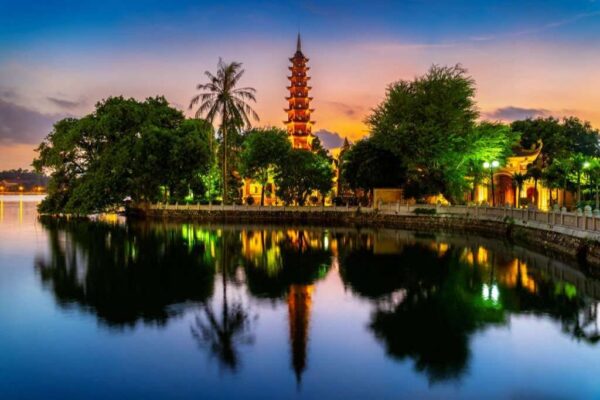
Travelers are often captivated by the frenetic energy and undeniable charm of Vietnam’s capital, making it the pulsating heart of the nation.
For some travelers, the hustle and bustle of motorbikes, the vibrant atmosphere, and the lively street vendors can be overwhelming. However, if you are seeking an immersive experience in Vietnamese urban culture, Hanoi is the ideal destination.
The charming old town quarter is a must-visit for travelers seeking a glimpse of its dilapidated yet captivating allure. History enthusiasts will be delighted by the array of outstanding museums, making it a destination worth prioritizing.
The Vietnam Museum of Ethnology and Vietnam Fine Art Museum offer visitors a captivating journey into the rich artistic heritage of the country. Meanwhile, the Ho Chi Minh Mausoleum stands as a significant homage to the visionary leader who shaped modern Vietnam.
There are numerous travel destinations to explore. Before making a booking, it is advisable to explore the various travel itineraries available for Halong Bay. Numerous travelers have expressed their disappointment with their cruise experience, so it is essential to thoroughly research and compare different options.
Read More: Top Tourist Attractions in Hanoi, Vietnam
3. Sapa
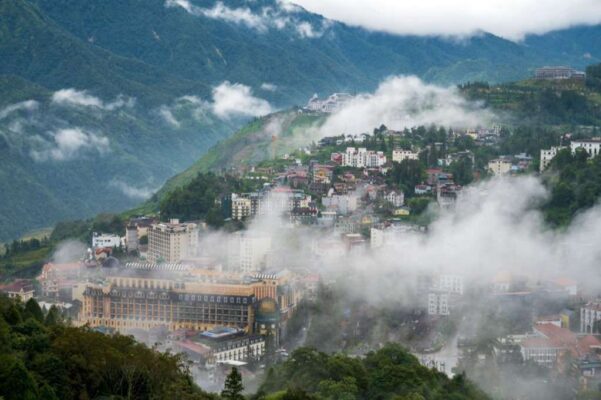
Sapa, a picturesque travel destination, is nestled amidst the lush rice fields of the countryside. These vibrant fields are embraced by the majestic Hoang Lien Mountains, also referred to as the Tonkinese Alps from the French colonial era. This region offers travelers the opportunity to witness Vietnam’s stunning rural landscapes.
Experience the breathtaking beauty of the deep valleys, where a vibrant tapestry of ethnic minorities, such as the Hmong, Giay, and Red Dzao people. Marvel at the terraced rice fields that adorn the rolling hills, while being captivated by the majestic presence of Fansipan Mountain, the tallest peak in the country.
Vietnam offers a plethora of options for travelers seeking a memorable trekking experience. Explore the stunning mountain views as you embark on a journey between charming villages, with ample opportunities for both multi-day treks and day hikes.
Sapa serves as the central hub for travelers, located in an old hill station. It has transformed into a vibrant tourist destination, constantly expanding. However, it stands in stark contrast to the serene and picturesque countryside just a stone’s throw away.
4. Ha Giang
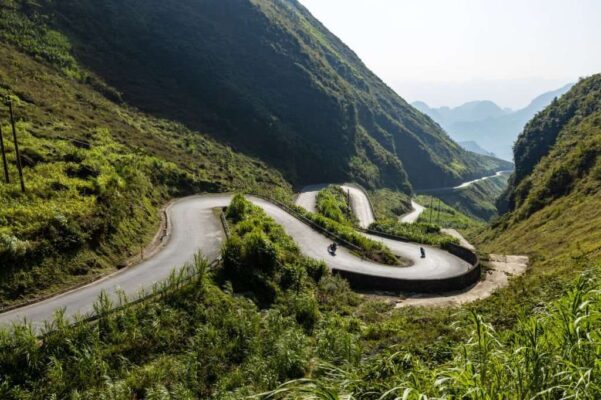
The breathtaking emerald-green karst mountain landscapes found along Ha Giang’s Mountain passes create the perfect setting for an unforgettable travel experience in this northern province. Whether you choose to explore by motorbike or car, you’ll be treated to stunning scenery throughout your journey.
When it comes to travel, the Quan Ba Pass is a must-visit destination. This winding route takes you from Ha Giang town to Tam Son, offering breathtaking views of the karst plateau and its rugged limestone formations. Another thrilling journey awaits on the Mai Pi Leng Pass, which meanders between Dong Van and Meo Vac. Prepare to be amazed by the stunning mountain landscapes and the picturesque valleys that unfold before your eyes.
Plan your trip to align with one of the region’s market days, where vendors from the nearby mountain villages gather in the town. The Sunday market in Dong Van is renowned as one of the finest.
5. Cat Ba Island
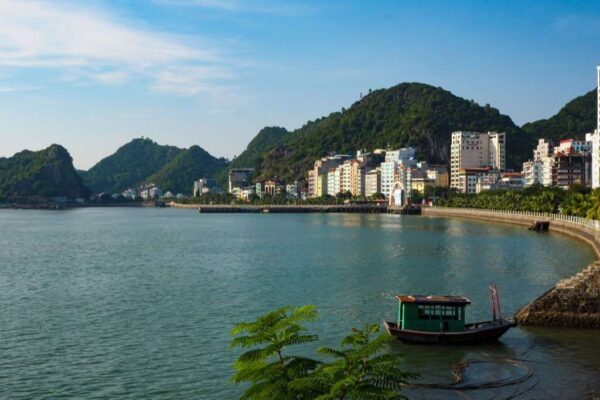
Cat Ba Island, located on the western edge of Halong Bay, is a vibrant hub for thrilling activities and captivating travel experiences in Vietnam.
If you’re looking to plan a memorable travel experience, this destination is perfect for exploring the wonders of Lan Ha Bay. Located just off the southern coast of Cat Ba, this place offers an array of exciting activities such as cruises and kayaking trips. Lan Ha Bay offers a serene and tranquil experience with its picturesque karst islets and outcrops, providing a peaceful alternative to the bustling Halong Bay.
When exploring Cat Ba, travelers can venture into the lush jungle of Cat Ba National Park. This magnificent park offers a haven for hikers, who can immerse themselves in the vibrant birdlife and encounter fascinating creatures like macaques.
For many travelers, however, Cat Ba offers a plethora of climbing opportunities. Travelers can embark on thrilling climbing adventures in this destination, making use of the magnificent limestone cliffs found on the island as well as the stunning outcrops in Lan Ha Bay. Whether you are a novice or an expert climber, there are plenty of opportunities to enjoy and challenge yourself in this picturesque setting.
6. Trang An Landscape Complex
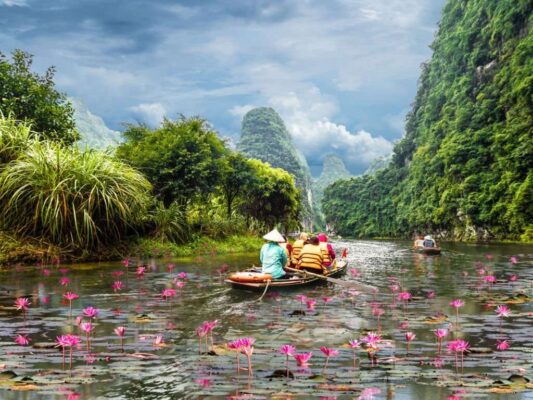
In June 2014, Trang An landscape complex was designated by UNESCO as a world cultural and natural heritage. Situated near the southern margin of the Red River Delta, the Trang An Landscape Complex is a spectacular landscape of limestone karst peaks permeated with valleys, many of them partly submerged and surrounded by steep, almost vertical cliffs.
Exploration of caves at different altitudes has revealed archaeological traces of human activity over a continuous period of more than 30,000 years. They illustrate the occupation of these mountains by seasonal hunter-gatherers and how they adapted to major climatic and environmental changes, especially the repeated inundation of the landscape by the sea after the last ice age. The story of human occupation continues through the Neolithic and Bronze Ages to the historical era. Hoa Lu, the ancient capital of Vietnam, was strategically established here in the 10th and 11th centuries AD. The property also contains temples, pagodas, paddy fields, and small villages.
Read More: Best Things to Do in Ninh Binh, Vietnam
7. Tam Coc
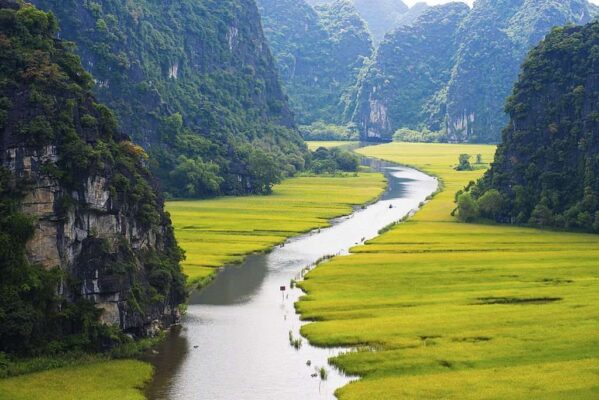
Located in the Ninh Binh province of Northern Vietnam, you will find the enchanting destination of Tam Coc. Translating to “three caves” in English, this captivating place is a must-visit for any traveler. Located in a picturesque setting of limestone cliffs and rice paddies, the three caves offer a captivating travel experience. As you explore the region, the meandering river adds to the charm of the landscape.
The caves, known as Hang Cả, Hang Hai, and Hang Ba, are the primary highlight of the region and draw visitors from far and wide. Embark on thrilling boat expeditions that will transport you to enchanting caves and guide you along the mesmerizing Ngo Dong River. As you traverse the waterway, you’ll encounter picturesque scenes of floating vendors, eager to cater to the needs of travelers who have embarked on a memorable day trip from Hanoi.
8. The Hue Imperial City
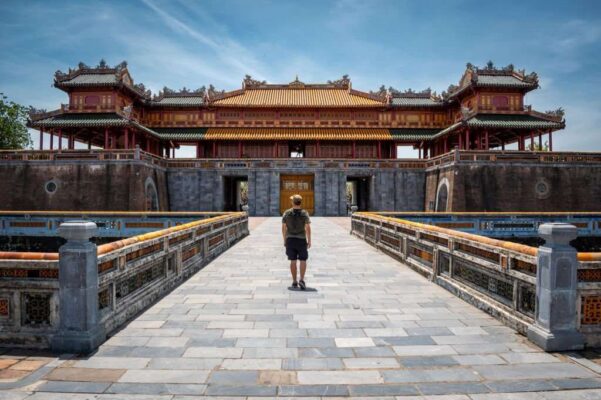
Hue city was Vietnam’s capital during the Nguyen Dynasty from 1802 to 1945. Its imperial relic site was listed as a World Cultural Heritage by UNESCO in 1993. Hue stands as a captivating destination steeped in rich history. This enchanting town is adorned with a plethora of remnants from the illustrious era of the Nguyen emperors in the 19th century.
Located amidst the breathtaking landscapes of the Perfume River, the Imperial Enclosure stands as a magnificent destination encompassed by expansive walls stretching over a distance of 2.5 kilometers.
While exploring the destination, make sure to visit the stunning Ngo Mon Gate, admire the exquisite interior detailing of the Thai Hoa Palace, discover the historical significance of the Dien Tho Residence where the Queen Mothers resided, and marvel at the beautifully preserved ceiling murals in the Halls of Mandarins.
One of the most enjoyable ways to explore a variety of distant locations is by embarking on a scenic riverboat journey along the Perfume River. Embark on a delightful day cruise that will transport you to explore numerous majestic royal tombs, accompanied by enchanting pagodas along the way.
If you’re looking to make the most of your travel experience, I highly recommend visiting the Tomb of Tu Doc. It is a remarkable destination that offers a glimpse into the rich history of the region. Additionally, don’t miss out on exploring the renowned Thien Mu Pagoda, which is considered a must-visit attraction. Its magnificent tower, standing at an impressive height of 21 meters, is truly awe-inspiring.
Read More: Best Things to Do in Hue, Vietnam
9. My Khe Beach
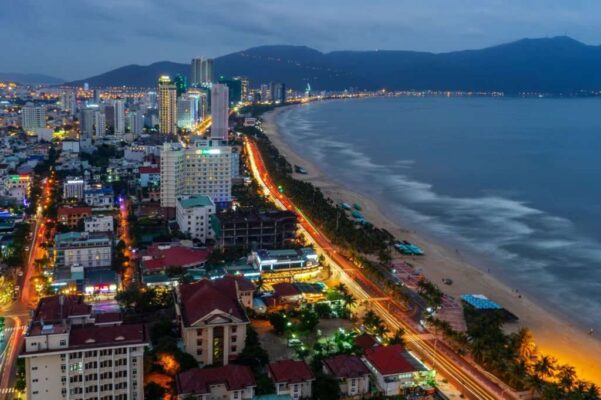
One of the most breathtaking travel destinations in Da Nang is undoubtedly My Khe Beach. This destination served as a popular spot for US servicemen seeking rest and relaxation during the Vietnam War. Nowadays, travelers flock to this destination for its immaculate white sandy beaches, crystal-clear turquoise waters, and abundant sunshine.
Travelers have the opportunity to rent a lounge chair on the sandy beach, unwind in the cool shade beneath a traditional thatched umbrella, or opt for an adventurous kayak rental from the local vendors. My Khe Beach is a popular destination for travelers and locals alike, thanks to its convenient location near numerous hotels and cafes. This makes it a bustling hub for those seeking breathtaking views and a memorable experience.
Read More: Best Things to Do in Da Nang
10. Hoi An Old Town
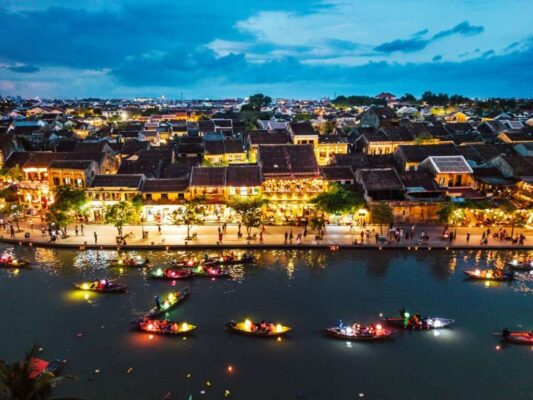
Hoi An Old Town is located in Quang Nam Province, Central Vietnam. Peaceful and ancient, Hoi An is one of the most famous tourist destinations in Central Vietnam that attracts not only domestic tourists but also tourists from all over the continents. In 1999, Hoi An Vietnam was even recognized by UNESCO as a World Heritage Site. This article will be a Hoi An review so that you can understand more why Hoi An Viet Nam is such a famous place.
Travel to the stunning city of Hoi An, known for its captivating atmosphere and abundant historic architecture.
Travelers will find great delight in exploring the charming old town quarter, which is filled with beautifully maintained merchant houses. These historic buildings offer a glimpse into Hoi An’s prosperous trading center era during the 15th century. Back then, the town served as a bustling hub where Japanese and Chinese merchants gathered to trade and admire the exquisite local silks.
There are numerous old merchant houses that have been made accessible to the public, allowing you to experience the essence of those times. One of the most remarkable travel destinations is the 17th-century Tan Ky House, renowned for its captivating architectural and decorative features.
Hoi An’s most iconic landmark is the charming Japanese Bridge, located at the western end of Tran Phu Street. Just a stone’s throw away, you’ll find the Assembly Hall of the Fujian Chinese Congregation, a beautifully adorned temple that is a must-visit in the old town.
In the town, you will discover a multitude of small pagodas and museums scattered around, but the real allure of Hoi An lies in leisurely strolling through the ancient streets of the old town, marveling at the beautifully maintained facades.
Read More: Best Things to Do in Hoi An, Vietnam
11. Phong Nha-Ke Bang National Park
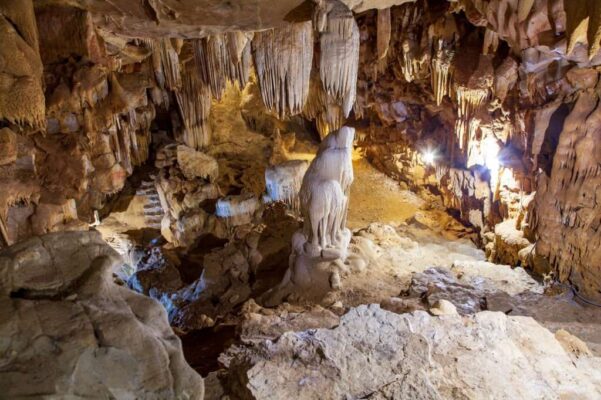
Phong Nha – Ke Bang National Park is a UNESCO World Heritage Site, located in the Bo Trach and Minh Hoa Districts of central Quang Binh Province, in north-central Viet Nam. Phong Nha – Ke Bang is famous for its cave systems. It has 300 caves with a total length of about 70 km, of which only 20 have been surveyed by Vietnamese and British scientists. The park contains many fascinating rock formations and Ke Bang Forest. Travelers should take a boat ride through underground rivers to experience nature and enjoy fresh air.
Phong Nha-Ke Bang National Park is a must-visit destination for travelers seeking adventure and natural beauty. One of the main highlights of the park that draws countless visitors is its magnificent caves. Phong Nha Caves offer an extensive network of cave systems, boasting numerous caverns that can accommodate entire city blocks.
One of the most remarkable travel destinations is Hang Son Doong. Son Trach, a bustling village nestled amidst the scenic beauty of Vietnam, serves as the perfect starting point for your extraordinary travel adventure. This vibrant village boasts excellent transportation connections that will effortlessly whisk you away to various enchanting destinations across Vietnam. Immerse yourself in the local culinary delights by indulging in the delectable offerings at the charming restaurants scattered throughout the village. Additionally, Son Trach serves as a convenient meeting point for embarking on guided tours that will lead you to the mesmerizing caves, ensuring an unforgettable experience.
12. My Son Holy Land
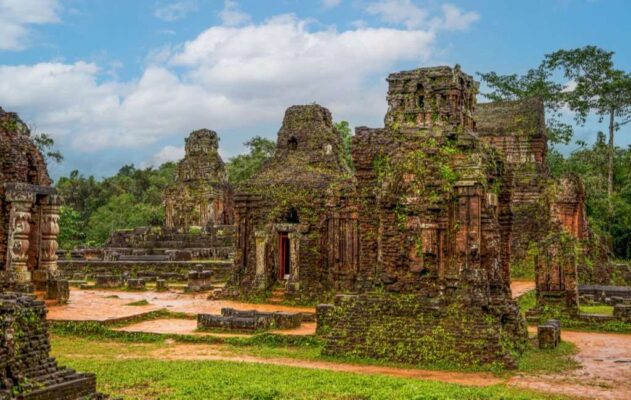
The My Son temple complex is regarded as one of the foremost Hindu temple complexes in Southeast Asia and is the foremost heritage site of this nature in Vietnam. It is often compared with other historical temple complexes in Southeast Asia, such as Borobudur of Java in Indonesia, Angkor Wat of Cambodia, Bagan of Myanmar, and Ayutthaya of Thailand. As of 1999, My Son has been recognized by UNESCO as a world heritage site. UNESCO accorded My Son this recognition pursuant to its criterion as an example of evolution and change in culture as evidence of an Asian civilization that is now extinct.
Nestled amidst breathtaking jungle-clad mountains, My Son is an enchanting ancient temple city of the Cham era, boasting a rich history dating back to the 4th century.
During the 7th to 10th centuries, travelers would often visit this ancient Hindu religious center, which remained a bustling hub of activity. However, as time passed, it gradually declined and eventually became completely abandoned by the 13th century.
In this mesmerizing travel destination, you will find approximately 20 temple structures that have managed to withstand the test of time. These remarkable architectural wonders are constructed using a combination of brick and sandstone blocks, showcasing captivating influences from diverse Asian empires such as Indian and Malay.
13. Mui Né
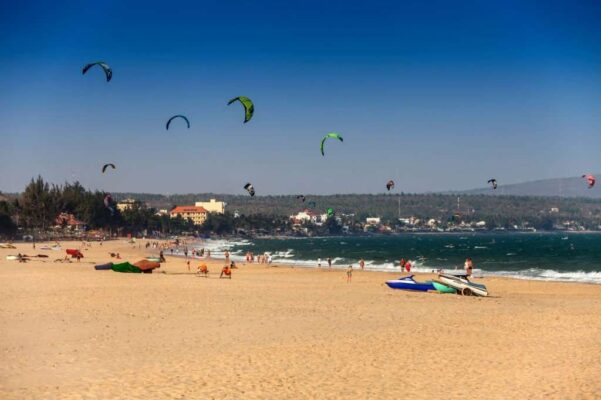
Over the past two decades, the once sparsely populated coastal paradise located to the south of the charming fishing village of Mui Ne has undergone remarkable transformation and witnessed significant growth. Because of the powerful sea breezes, this location in Vietnam has become a renowned spot for kiteboarding and windsurfing enthusiasts.
A visit to Mui Ne would not be fully experienced without exploring the renowned sand dunes situated just a short distance north of the town. Traveling to the vast sandy expanse offers incredible panoramic views, especially during the mesmerizing sunset.
14. Nha Trang
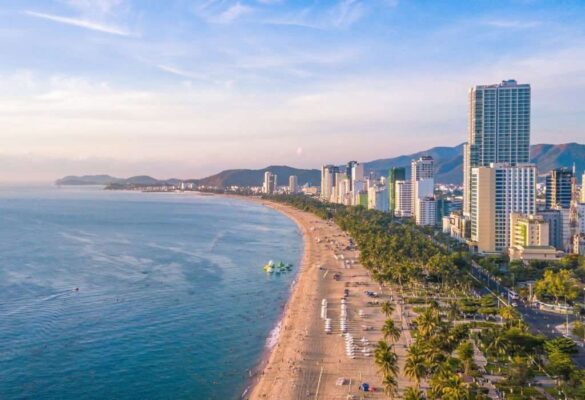
Located at the gateway of the South-Central Coast and the Central Highlands, Nha Trang has all the advantages of geographical location, climate, and natural scenery to become a paradise in terms of tourism and resort of Vietnam. In particular, it was voted by Travel and Leisure magazine as one of the 29 most beautiful bays in the world. Nha Trang is widely regarded as Vietnam’s top resort town.
It is situated alongside one of the country’s most stunning bays. The destination boasts stunning coastal landscapes, adorned with pristine sandy beaches and crystal-clear waters, offering a pleasant climate for a memorable getaway. In addition, Nha Trang has an extremely diverse system of large and small islands, in which there are a lot of stunning landscapes on the shore and under the water with wild and rustic features. Therefore, it has become an ideal destination for both domestic and foreign tourists.
With a population of approximately 300,000 residents, this vibrant city offers a more urban and livelier atmosphere compared to other beach destinations such as Mui Ne and Phu Quoc. It is also a popular destination for scuba diving enthusiasts in Vietnam.
Read More: Best Things to Do in Nha Trang, Vietnam
15. Da Lat City- The City of Thousand Flowers
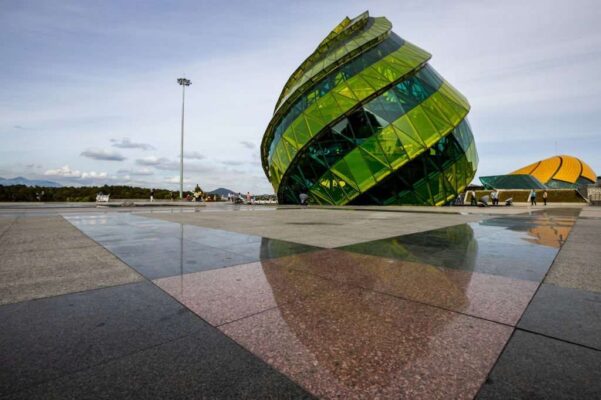
Da Lat City is one of the famous tourist cities of Vietnam. With a series of beautiful landscapes and tourist areas ranked as national scenic spots. Therefore, Da Lat is increasingly crowded with domestic and foreign tourists to visit and enjoy. Referring to the city of Dalat Vietnam, everyone is sure to admire the unique beauty of this city of thousands of flowers. With mild year-round weather and a peaceful life with gentle people, Da Lat is always the number one choice for short trips or long vacations.
Da Lat is the city with the best climate in Vietnam. The climate is cool all year round, the average temperature does not exceed 20 -21 degrees Celsius including the hottest days. But another special thing is that Da Lat is not too cold. During the winter months in Da Lat, the temperature is not less than 10 degrees Celsius. This place is known as a tourist paradise. It has a mild climate and cool weather all year round. Da Lat hides itself in the vast green pine forests. Along with that is the misty mist that enhances the beauty of Da Lat city.
In addition, the city of Da Lat with thousands of flowers also has many famous tourist attractions. Let’s explore the highlights of Da Lat!
Read More: Best Things to Do in Da Lat, Vietnam
16. Ho Chi Minh City
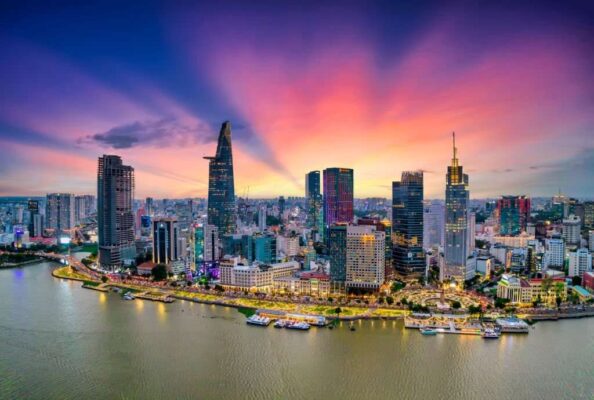
No trip to Vietnam is complete for large-city aficionados until they visit Ho Chi Minh City, the country’s pulsating commercial powerhouse. The streets are clogged with motorcycles and vehicles, the restaurant and café culture are quite international, and the shopping is among the finest in the country.
Dong Khoi, the city’s core area, is relatively compact and readily accessible, and it houses the majority of the city’s attractions. The HCMC Museum, with a remarkable collection of objects that ties together the narrative of the city, and the great Notre Dame Cathedral, erected in the late nineteenth century, are both located here.
Visit the neighboring Da Kao ancient neighborhood for some of the greatest remaining examples of the city’s French colonial architecture, as well as the Jade Emperor Pagoda, which has a spectacular collection of Buddhist and Taoist religious imagery. Following that, the History Museum is a must-see for history buffs, with heaps of artifacts from numerous ancient sites on show.
For many tourists, the two must-see tourism sites are located just outside the city center, along Nguyen Thi Minh Khai Street. The Reunification Palace, formerly known as the Independence Palace, served as the presidential palace of South Vietnam. It is most known as the location where North Vietnamese tanks came to a halt on April 30, 1975, formally ending the conflict. It’s a wonderful site to explore, replete with 1960s furniture that is still in place.
The War Remnants Museum, which is nearby, offers a horrific image of war’s cruelty and the countless crimes perpetrated by US forces throughout their Vietnam campaign while being blatantly prejudiced.
Read More: Top Tourist Attractions in Ho Chi Minh City
17. Con Dao Islands
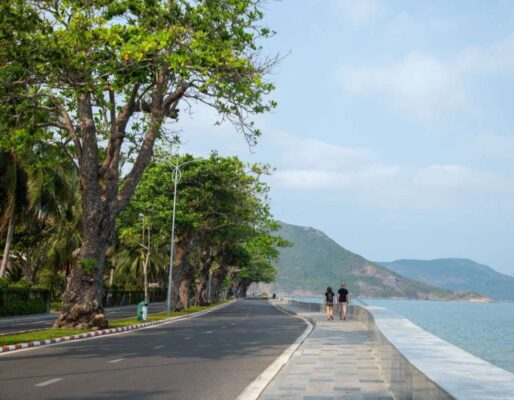
During the era of French colonization, the Con Dao Islands gained notoriety as the Devil’s Island of Indochina, serving as a destination where numerous prisoners of war were held captive. Today, these 16 islands off the southern coast of Vietnam offer a unique travel experience.
Travelers flock to the stunning beaches, where they can indulge in thrilling scuba diving and snorkeling activities. Nevertheless, one can still delve into the rich history of Con Dao by visiting the remaining prison buildings.
18. Mekong Delta
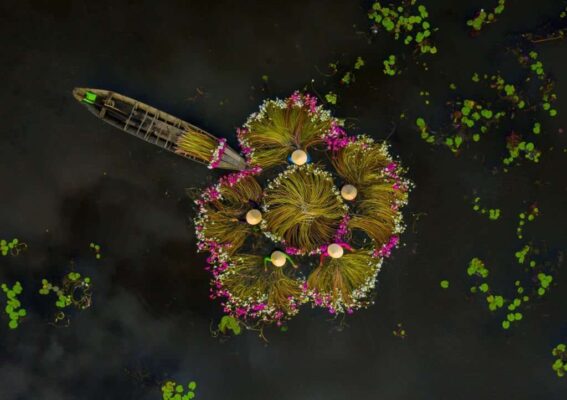
In the southernmost region of Vietnam lies the enchanting destination where the majestic Mekong River gracefully meets the vast ocean, creating a captivating network of waterways that intricately weave through the fertile floodplain.
Immerse yourself in the breathtaking beauty of the lush landscapes, adorned with picturesque paddy fields and enchanting mangroves. Experience the vibrant local culture as you delve into the bustling floating markets, navigating through the waterways on a captivating boat adventure. The delta region awaits, offering an intriguing and captivating destination for adventurous travelers to explore.
Can Tho is a highly sought-after destination for travelers looking to explore the vibrant floating markets of Phong Dien and Cai Rang. Additionally, embarking on boat excursions from Ca Mau presents the opportunity to discover the enchanting U Minh Mangrove Forest and the captivating Cau Mau Nature Reserve.
If you’re a passionate traveler who loves exploring nature and observing wildlife, you’ll be thrilled to know that this region of Vietnam offers an incredible experience. It is widely regarded as a top destination for avid bird watchers and nature enthusiasts. Here, you can immerse yourself in the beauty of Tra Su Bird Sanctuary Forest and Bac Lieu Bird Sanctuary, both of which are renowned for their diverse bird species and stunning natural landscapes.
19. Phu Quoc Island
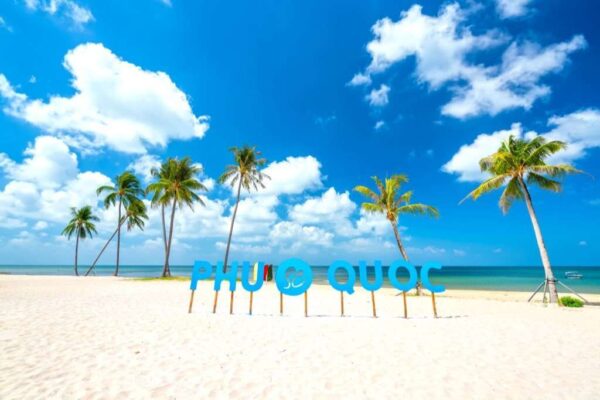
Phu Quoc Island, sitting off the coast of Cambodia, is one of the most appealing attractions as well as Vietnam’s largest island. in Vietnam. It owns endless unspoiled beaches for water activities, romantic sunsets for Instagram feed, uninhabited remoted islands for exploration, and dense tropical forests for adventures.
Beyond the snow-white beaches with ice cream-soft sand, Phu Quoc offers a wide range of luxury resorts, chic restaurants, and comforting spa treatments. Traditional villages, sacred temples and pagodas, and spacious green parks can also please even a perfectly picky traveler. Phu Quoc offers a serene and untouched travel experience, reminiscent of what Phuket would have been without excessive development. The travel destination boasts unspoiled tropical forests, untouched coral reefs, and stunning beaches.
One of the most stunning travel destinations is Bai Dai (Long Beach), which has been recognized by ABC News as one of the top five pristine and picturesque beaches. Phu Quoc is renowned for its exceptional production of nuoc mam, a delightful, fermented fish sauce that is highly regarded worldwide.
FAQs
Q: Is Vietnam safe for tourists?
A: Vietnam is generally considered safe for tourists. However, like any other destination, it’s essential to take common-sense precautions and stay aware of your surroundings.
Q: What’s the best way to get around Vietnam?
A: The most popular ways to get around Vietnam are by using domestic flights, trains, buses, and renting a motorbike or bicycle, depending on your preferences and the distances you plan to cover.
Q: Do I need a visa to visit Vietnam?
A: Most visitors to Vietnam need a visa. However, there are exceptions for certain nationalities. It’s best to check with the Vietnamese embassy or consulate in your country before traveling.
Q: What’s the local currency, and can I use credit cards?
A: The local currency is the Vietnamese Dong (VND). While credit cards are accepted in major cities and tourist areas, it’s a good idea to carry cash for smaller businesses and rural areas.
Q: What’s the cuisine like in Vietnam?
A: Vietnamese cuisine is renowned for its fresh ingredients and bold flavors. You must try dishes like pho, banh mi, and spring rolls when visiting.

